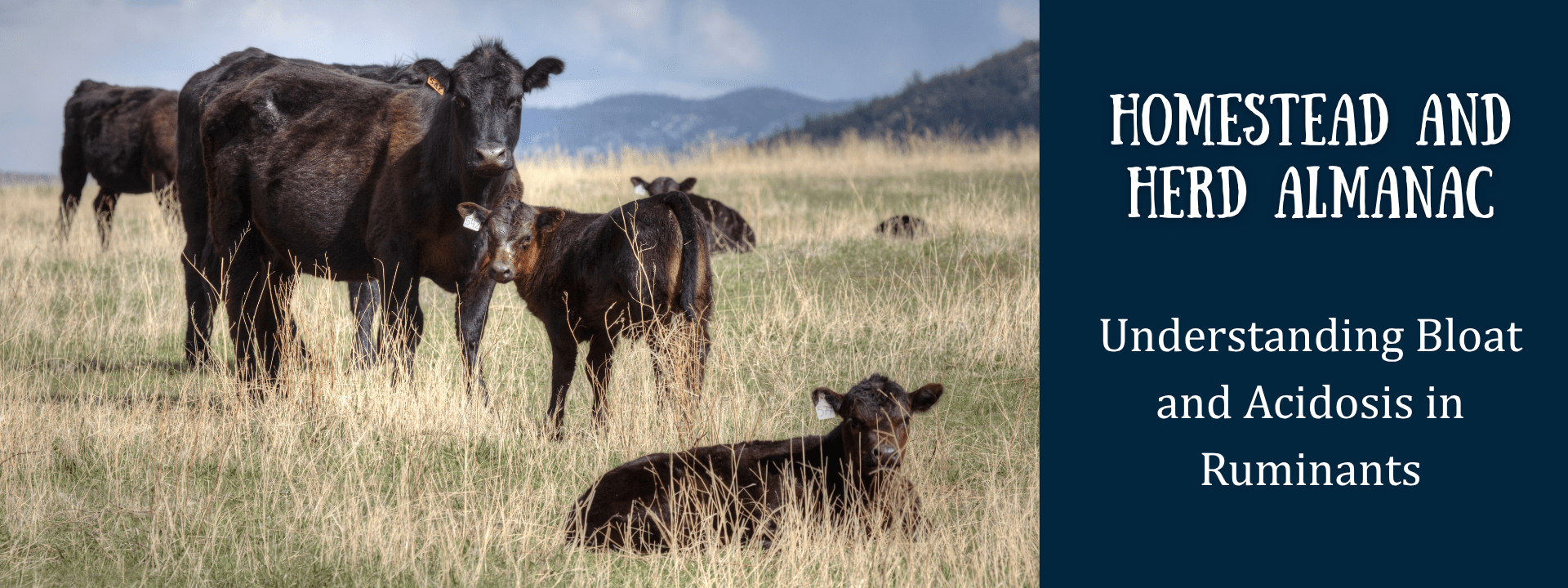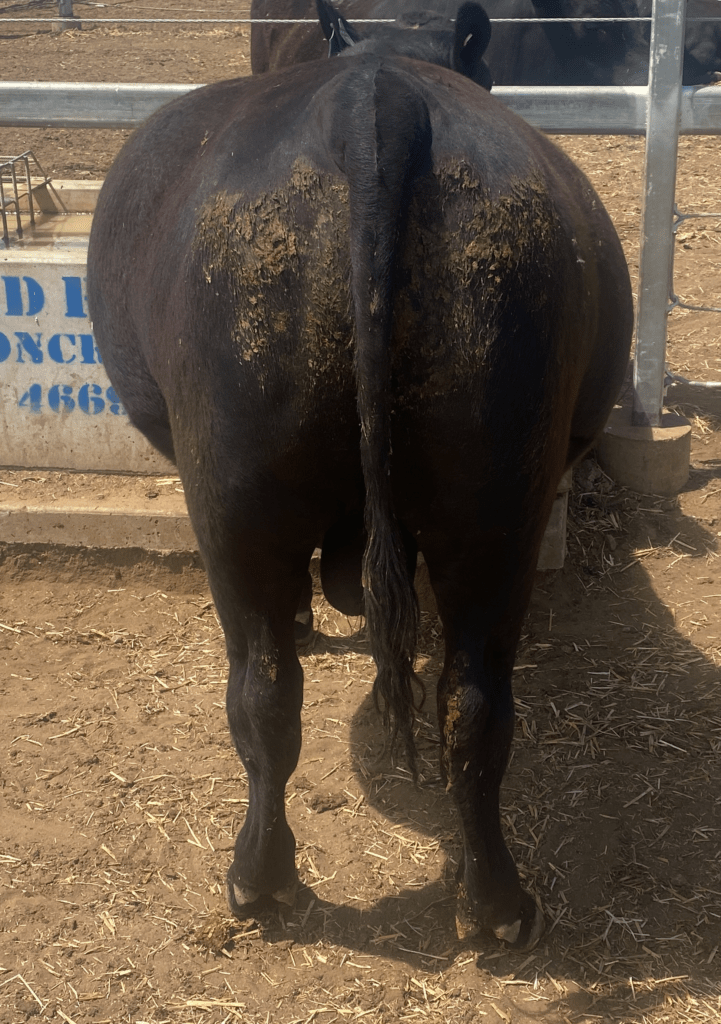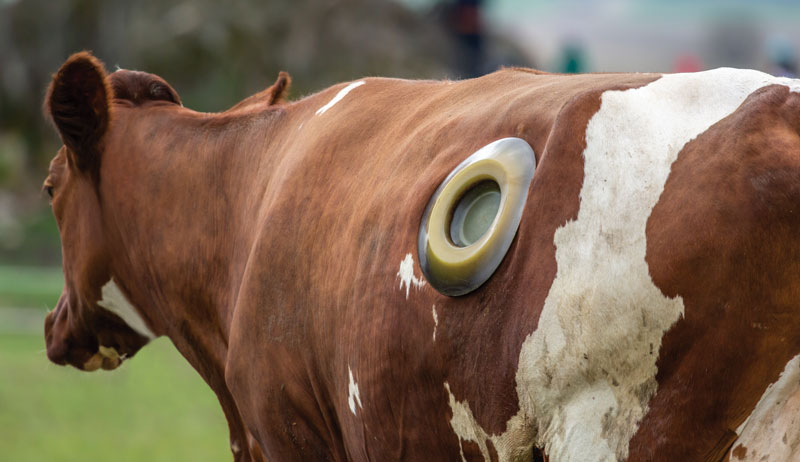
Understanding Bloat and Acidosis in Ruminants
Bloat and acidosis are two serious digestive disorders that can cause sudden illness or death in cattle and other ruminants. Both conditions disrupt normal rumen function, but they have different causes, symptoms, and prevention strategies. Early recognition and proper management are essential for maintaining herd health and preventing costly losses.
Bloat in Ruminants
Bloat, also known as ruminal tympany, is an abnormal accumulation of gas in the rumen. It can occur suddenly and lead to death if not treated promptly. Death rates in severe cases can reach up to 20% on high-risk pastures.
Types of Bloat
- Primary (Frothy) Bloat – the most common type, caused by gasses becoming trapped in a stable foam within the rumen.
- Secondary (Free-Gas) Bloat – caused by an inability to expel gas due to physical blockage or interference with normal rumen function.
Primary (Frothy) Bloat
In frothy bloat, the normal gasses produced during fermentation become trapped in small bubbles within a stable foam, preventing eructation (belching). As gas pressure increases, the rumen expands, pressing against the diaphragm and lungs, which can suffocate the animal if not relieved.
Causes and Risk Factors
- Lush, legume-dominant pastures: Especially alfalfa, ladino, red and white clover.
- Succulent forages: Reduced saliva production and increased soluble proteins (like saponins and hemicellulose) promote foam formation.
- High protein and rapid digestion: Fast-digesting forages release fine particles that trap gasses.
- Feedlot diets: Finely ground grains and low roughage intake increase foam stability.
Low risk legumes such as sainfoin, crown vetch, milk vetch, fenugreek, and birdsfoot trefoil contain tannins that bind proteins and reduce the risk of foam formation.
When it occurs
- Most common when cattle are first placed on lush legume pastures, particularly in the vegetative to early bud stages of growth.
- Can also occur when feeding high-quality legume hay or during feedlot transitions.
Symptoms
- Sudden, severe abdominal distension, especially on the left side.
- Tight, rounded flank that may protrude above the backline.
- Labored breathing, open-mouth breathing, or grunting.
- Restlessness, frequent urination, or collapse if untreated.
Treatment
- Frothy Bloat: Administer antifoaming agents (e.g. poloxalene, mineral oil, or dimethicone) orally or via a stomach tube.
- Emergency Relief: In life-threatening cases, a rumenotomy (surgical incision into the rumen) may be necessary to release gas.
- Prevention: Provide gradual adaptation to lush pastures, supply dry hay before turnout, and cons bloat-preventive supplements or blocks.

Secondary (Free-Gas) Bloat
Free-gas bloat occurs when gas cannot escape due to a physical blockage or interference with normal rumen contractions.
Common Causes
- Esophageal obstruction (e.g., root, apple, or foreign object).
- External pressure from an abscess or enlarged organ.
- Tetanus, hypocalcemia, or rumen atony reducing rumen movement.
- Improper positioning (e.g., animals stuck on their back or side).
- Treatment may include removal of obstruction, rumen trocar placement, or in chronic cases, a rumen fistula.

Acidosis in Ruminants
Acidosis is a metabolic disorder caused by rapid fermentation of carbohydrates and a resulting drop in rumen pH. It is most common in feedlot cattle or animals on high-grain diets, including show and finishing animals.
Understanding Rumen pH
- Normal (forage diet): pH 6.0-7.0
- Moderate acidosis: pH 5.5-5.9
- Acute acidosis: pH below 5.2
As the pH drops, beneficial microbes die off, and lactic acid-producing bacteria multiply. This increases acidity, further depressing rumen motility and leading to inflammation and tissue damage.
Causes
- Suddenly dietary shift from forage to high-concentrate diets.
- Excessive consumption of grain or other fermentable carbohydrates.
- Inconsistent feeding schedules or low fiber intake.
Symptoms
- Lethargy and loss of appetite
- Diarrhea (often gray, foamy or watery)
- Dehydration and weakness
- Decreased rumination and bloat
- Laminitis or lameness in chronic cases
Complications
- Rumenitis: Lesions and ulceration of the rumen wall.
- Liver Abscesses: Bacteria enter the bloodstream via rumen lesions and travel to the liver.
- Reduced Performance: Lower feed efficiency, slower gains, and carcass quality losses.
Treatment and Prevention
- Administer buffers such as sodium bicarbonate.
- Remove grain and provide good-quality hay to restore rumen balance.
- Gradually introduce grain diets to allow microbial adaptation.
- Include feed additives that promote stable rumen fermentation.
Bloat vs. Acidosis: A Quick Comparison
Feature | Frothy Bloat | Acidosis |
Primary Cause | Stable foam traps fermentation gases (lush legume or high-protein forage) | Rapid fermentation of carbohydrates drops rumen pH |
Rumen Condition | Foam-filled rumen; trapped gases | Acidic rumen; disrupted microbial balance |
Physical Signs | Distended left flank, respiratory distress | Weakness, dehydration, foamy gray manure |
Relationship | A physical condition affecting gas release | A metabolic disorder that can lead to bloat |
Treatment | Antifoaming agents, rumen relief | Buffers, gradual diet correction, roughage intake |
Key Takeaways
- Introduce diet changes slowly, especially when moving animals from hay to lush pastures or grain diets.
- Provide roughage daily to maintain proper rumen function.
- Monitor cattle closely during high risk periods (spring flush, feedlot transitions).
- Use preventative supplements designed to reduce bloat and support rumen health.
- Work with your feed advisor or veterinarian to create a balanced nutrition program that minimizes digestive disorders.
